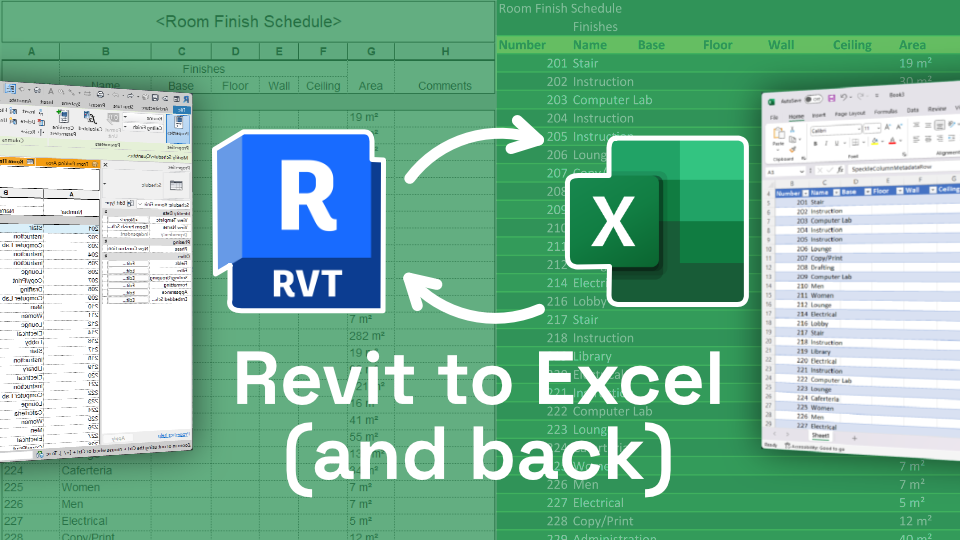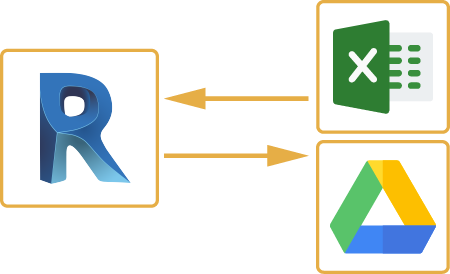Import Excel into Revit: Improving Your Process
Wiki Article
Revit Accelerator: Excel Assimilation Methods for Increasing Performance and Collaboration
Are you seeking to improve your efficiency and partnership while making use of Revit? Look no more! In this short article, we will explore the advantages of incorporating Excel right into your Revit operations. Discover just how you can simplify your processes, make the most of collaboration, and also discover innovative methods for increasing performance. Plus, we will certainly share finest practices for flawlessly integrating Excel right into your Revit jobs. Prepare to supercharge your Revit experience with our Revit Accelerator: Excel Combination Strategies!Benefits of Excel Assimilation in Revit
The benefits of Excel assimilation in Revit are various and can considerably enhance productivity and collaboration. By perfectly attaching these 2 powerful tools, you can simplify your operations and conserve important time. With Excel combination, you can conveniently import and export data between Revit and Excel, permitting you to leverage the staminas of both programs.
Another benefit of Excel combination is the capacity to develop vibrant schedules and reports. By linking your Revit model to an Excel spreadsheet, any type of adjustments made in Revit will instantly update in the corresponding Excel data. This makes it simple to produce current timetables, quantity launches, and other job paperwork.
Excel combination in Revit likewise allows much better partnership amongst group members. With the capability to import and export data, you can quickly share information with colleagues who may not have access to Revit. This promotes efficient interaction and enables better coordination and decision-making.
Improving Workflows With Revit and Excel
Enhancing operations with Revit and Excel can substantially boost performance and collaboration. By combining the capabilities of Revit and Excel, you can perfectly transfer data in between the 2 applications, getting rid of the need for hands-on data entry and reducing the risk of mistakes.
Making Use Of Revit and Excel with each other enables you to take advantage of the staminas of each program - import excel into revit. You can export information from Revit into Excel, where you can carry out complex calculations, develop graphes and graphs, and examine the info in a more organized and reliable manner. On the various other hand, you can import data from Excel into Revit, allowing you to swiftly update your versions and paperwork based on adjustments made in Excel
The combination of Revit and Excel also promotes collaboration among staff member. By sharing Excel documents, you can easily interact and work together on layout and construction-related information. This enhances sychronisation and guarantees that everyone is working with the most up-to-date details.
Taking Full Advantage Of Collaboration With Excel and Revit
To maximize partnership with Excel and Revit, you can flawlessly share and update style and construction-related information with your group. With simply a couple of clicks, you can import Excel spreadsheets into your Revit model, permitting you to easily gain access to and adjust the data.One of the crucial advantages of utilizing Master conjunction with Revit is the capacity to update data in both programs simultaneously. Any kind of changes made in Excel will immediately be mirrored in Revit, and the other way around. This ensures that everyone is working with the most updated details, staying clear of complication and conserving beneficial time.
Additionally, Excel provides effective devices for evaluating other and organizing data, which can considerably improve your collaboration initiatives. You can create customized reports and charts in Excel, helping you to picture and communicate vital job details properly. This can be specifically valuable when presenting information to stakeholders or making informed decisions based upon task metrics.
Advanced Techniques for Increasing Productivity in Revit Using Excel
By making use of sophisticated techniques in Revit, you can significantly raise your performance by leveraging the power of Excel. Among the essential strategies for enhancing efficiency is by utilizing Excel as an information administration tool. With Revit's Excel integration attribute, you can link Excel spread sheets directly to your Revit version, enabling you to easily handle and update data. This combination allows you to create schedules, compute quantities, and do data analysis successfully.
In addition, you can utilize Excel macros to automate recurring tasks in Revit (revit tools). Macros permit you to tape-record a collection of activities and play them back with a solitary click, saving you effort and time. For instance, you can create a macro to immediately produce area schedules or update specification worths wholesale.
Best Practices for Excel Integration in Revit
Utilizing Excel as a data monitoring device in Revit permits for efficient management and upgrading of data. One of the ideal techniques for Excel assimilation in Revit is to develop a clear and organized data framework. By complying with these best methods, you can successfully utilize Excel as an information administration tool in Revit and enhance your efficiency and collaboration.Verdict
Finally, incorporating Excel with Revit can substantially improve efficiency and collaboration in the layout process. By simplifying workflows and optimizing cooperation, teams can function much more successfully and efficiently. Advanced strategies, such as utilizing Excel solutions and macros, can further improve performance in Revit. Nevertheless, it is vital to follow best methods to make certain seamless combination and stay clear of any kind of potential problems. By leveraging the power of Excel, Revit individuals can attain greater degrees of productivity and collaboration in their jobs.With Excel assimilation, you can easily import and export data between Revit and Excel, permitting you to take advantage of the toughness of both browse around this site programs.
One of the vital benefits of Excel assimilation is the capacity to use Excel formulas and functions within Revit. By linking your Revit model to an Excel spread sheet, any type of modifications made in Revit will instantly update in the corresponding Excel data. On this page the other hand, you can import information from Excel right into Revit, enabling you to rapidly update your models and paperwork based on modifications made in Excel.
With Revit's Excel assimilation attribute, you can connect Excel spreadsheets directly to your Revit design, allowing you to easily take care of and update data.
Report this wiki page